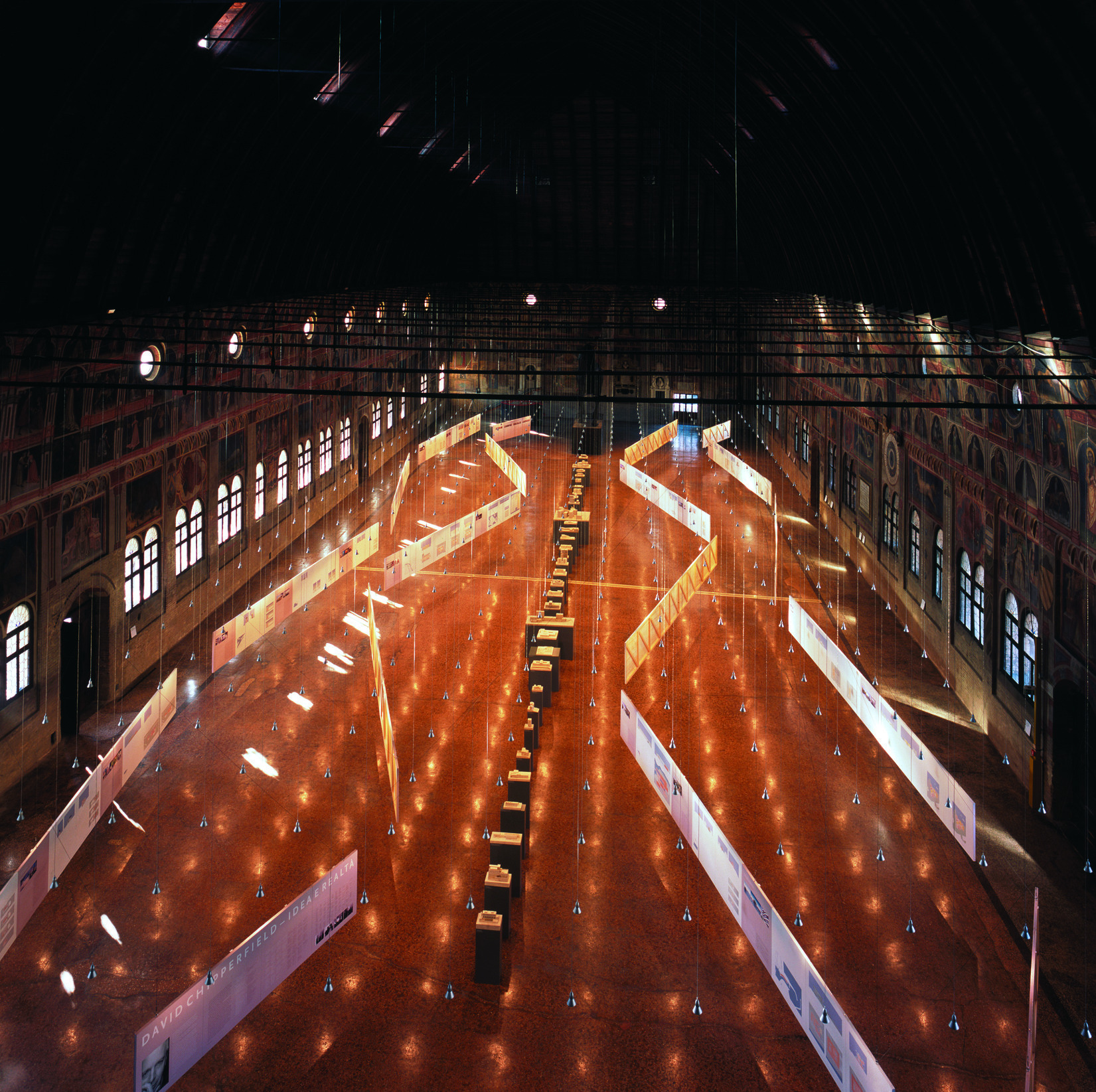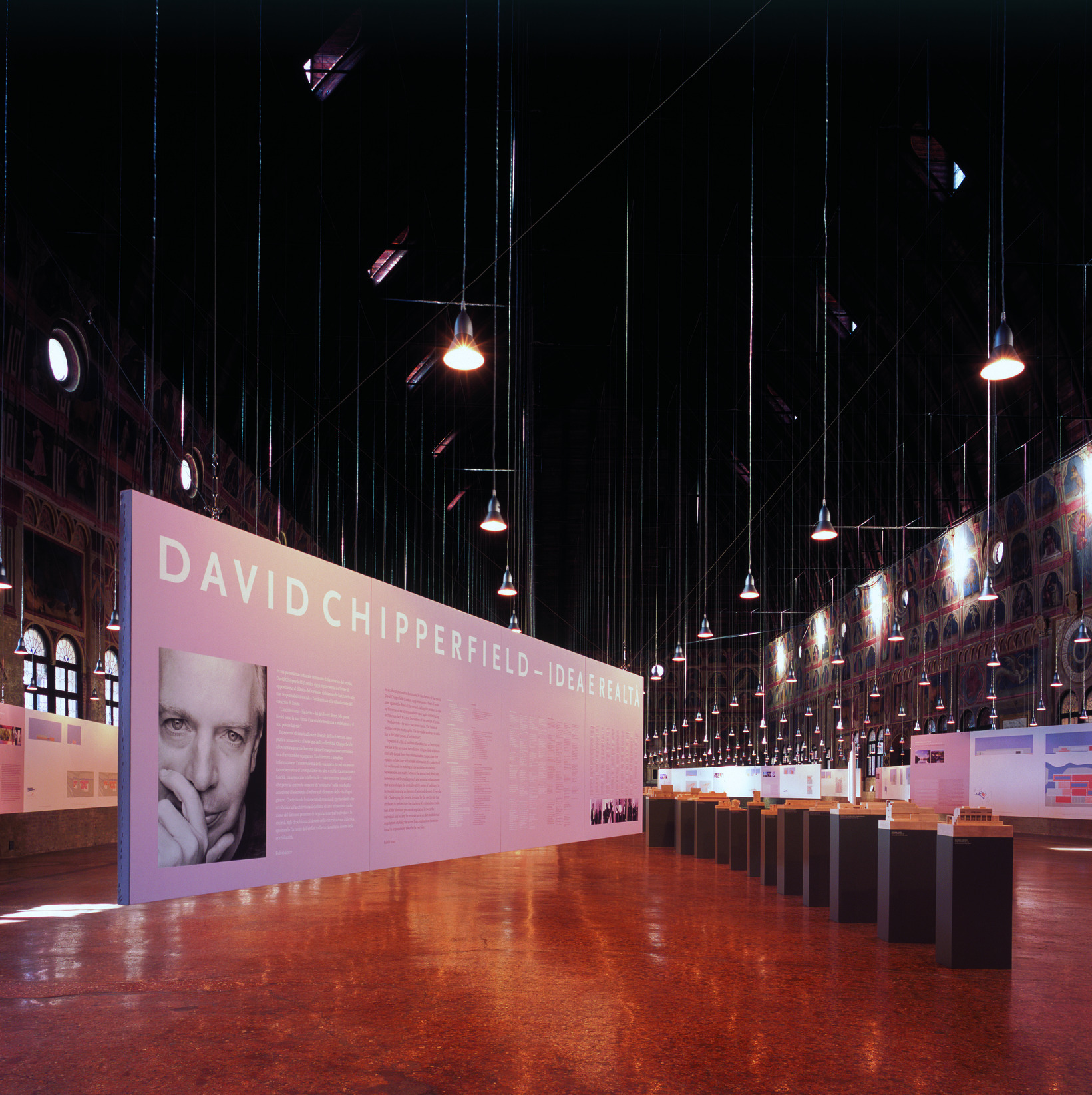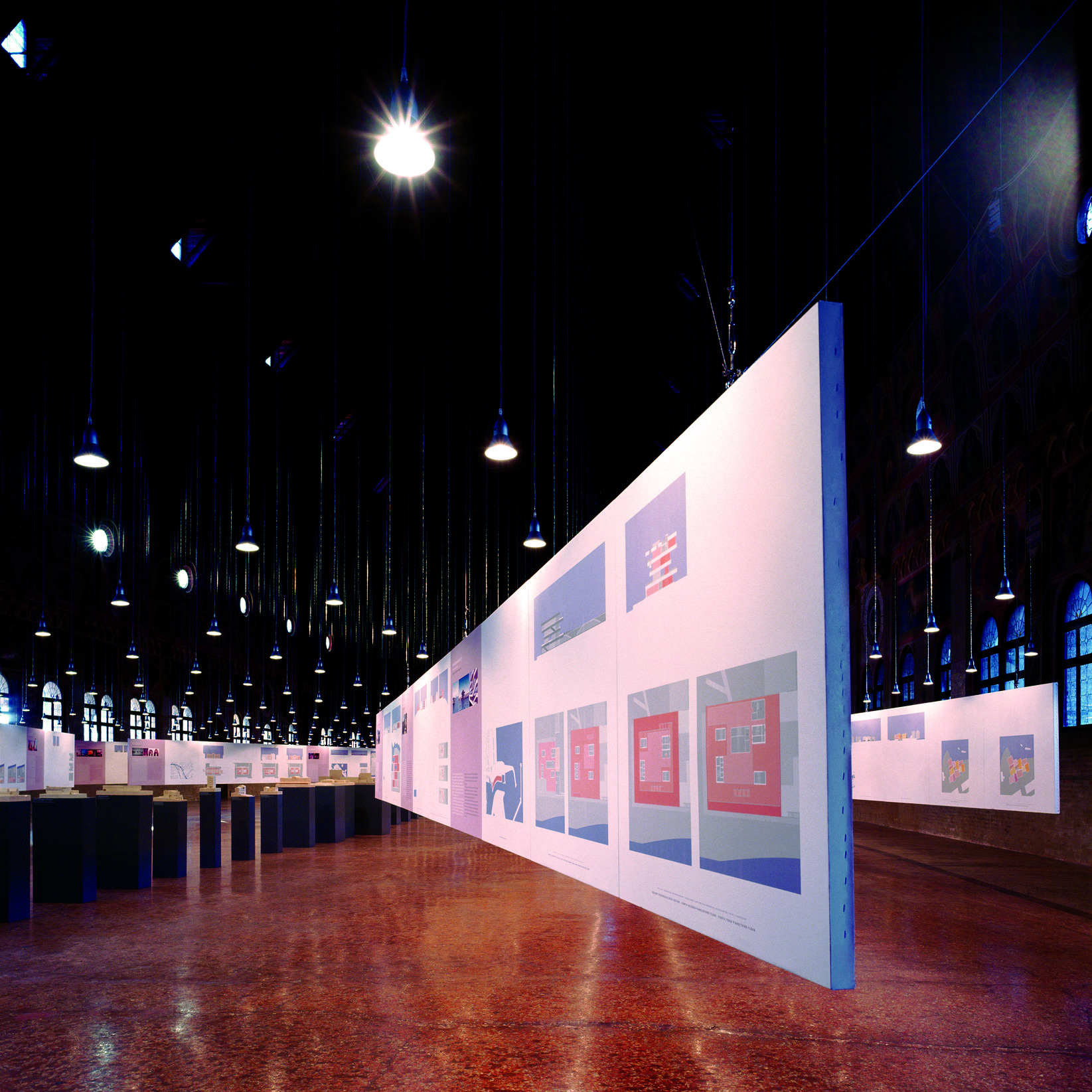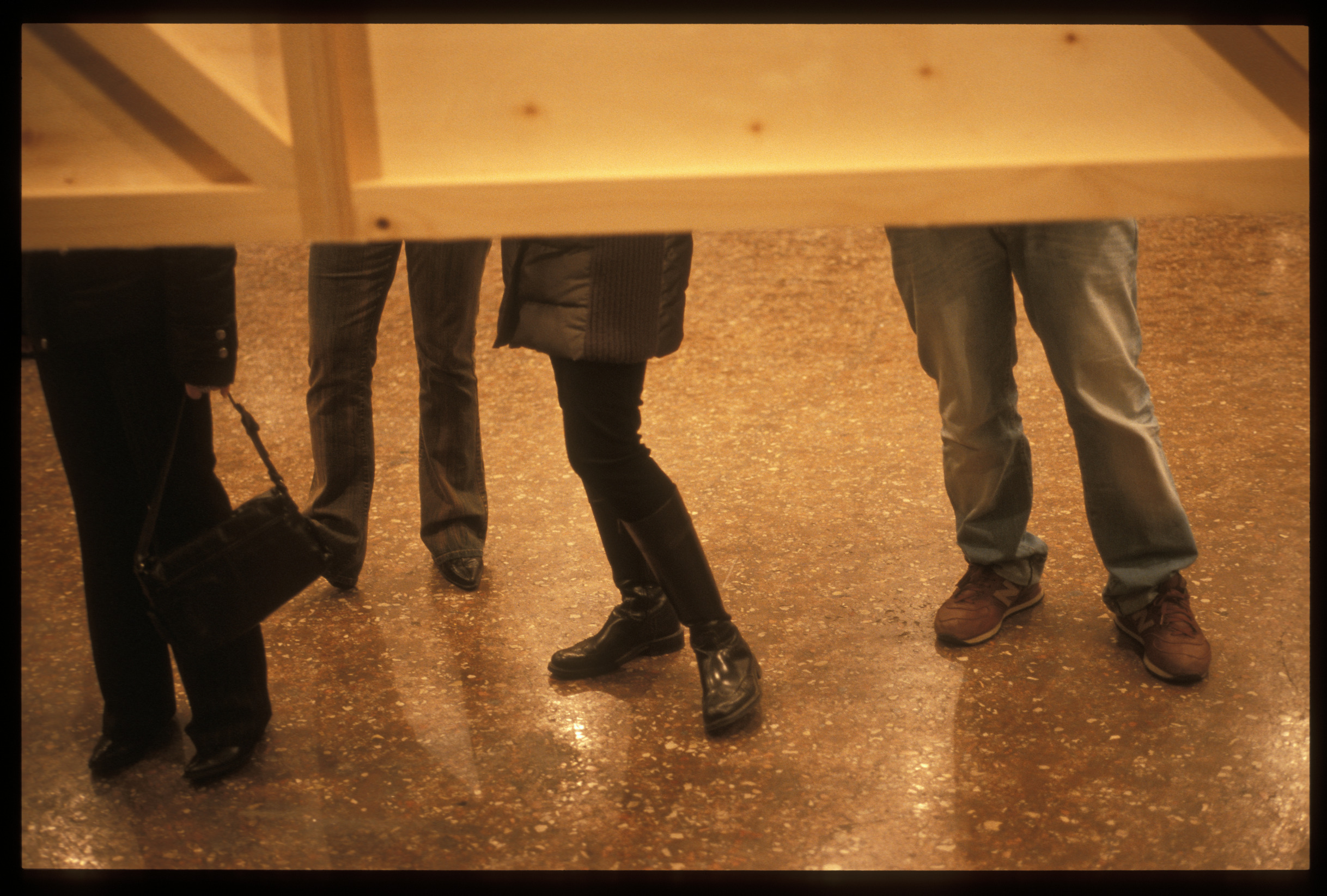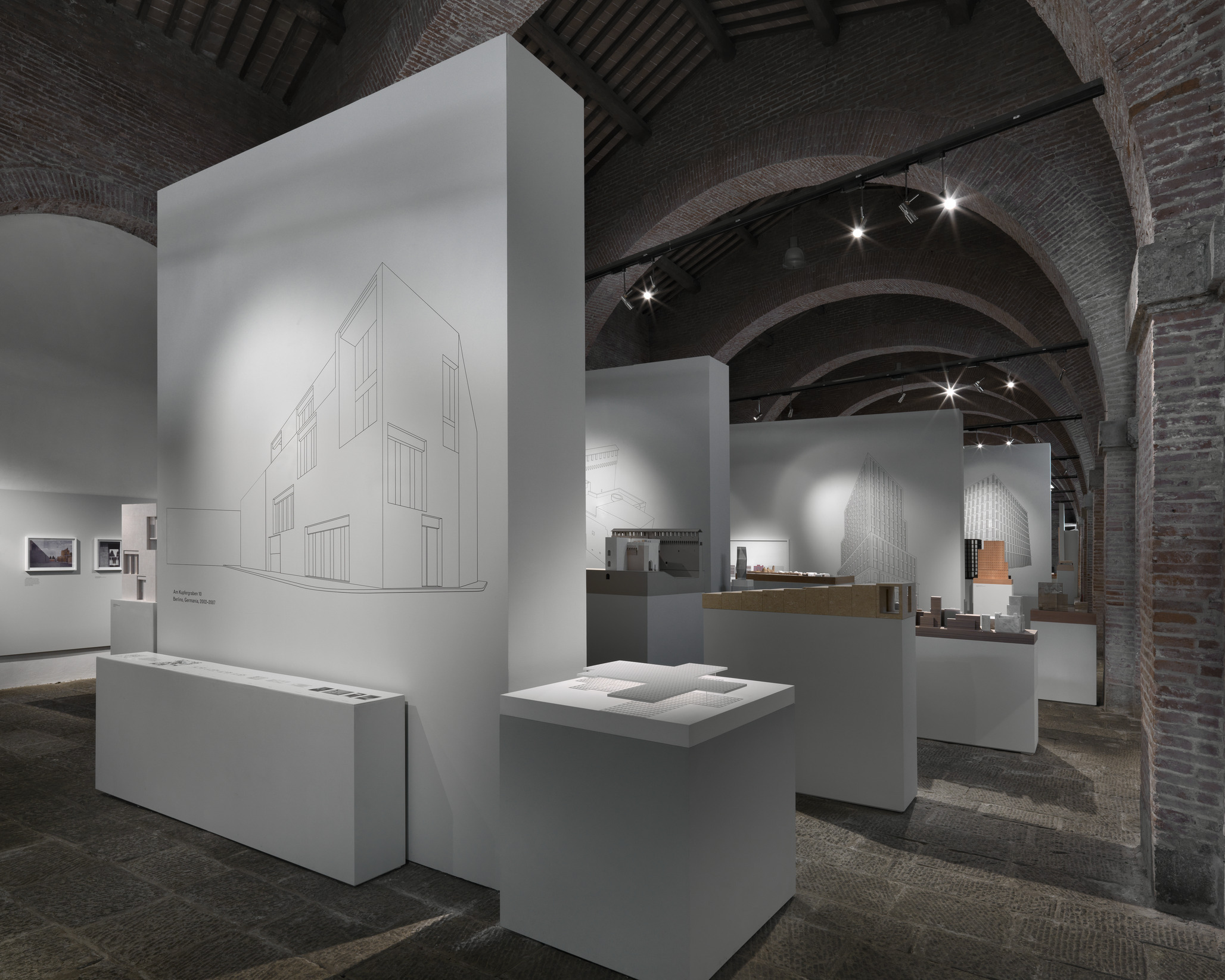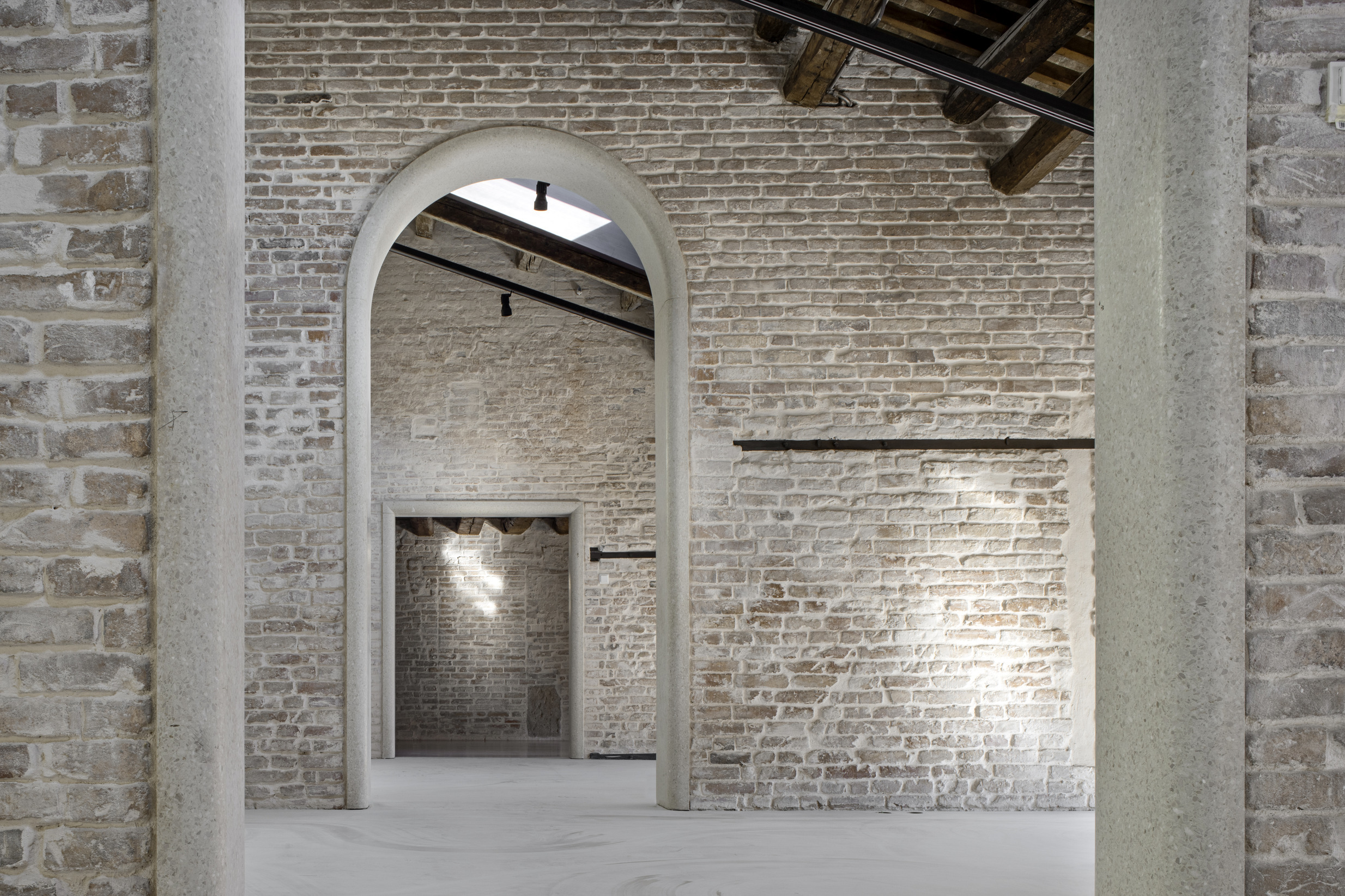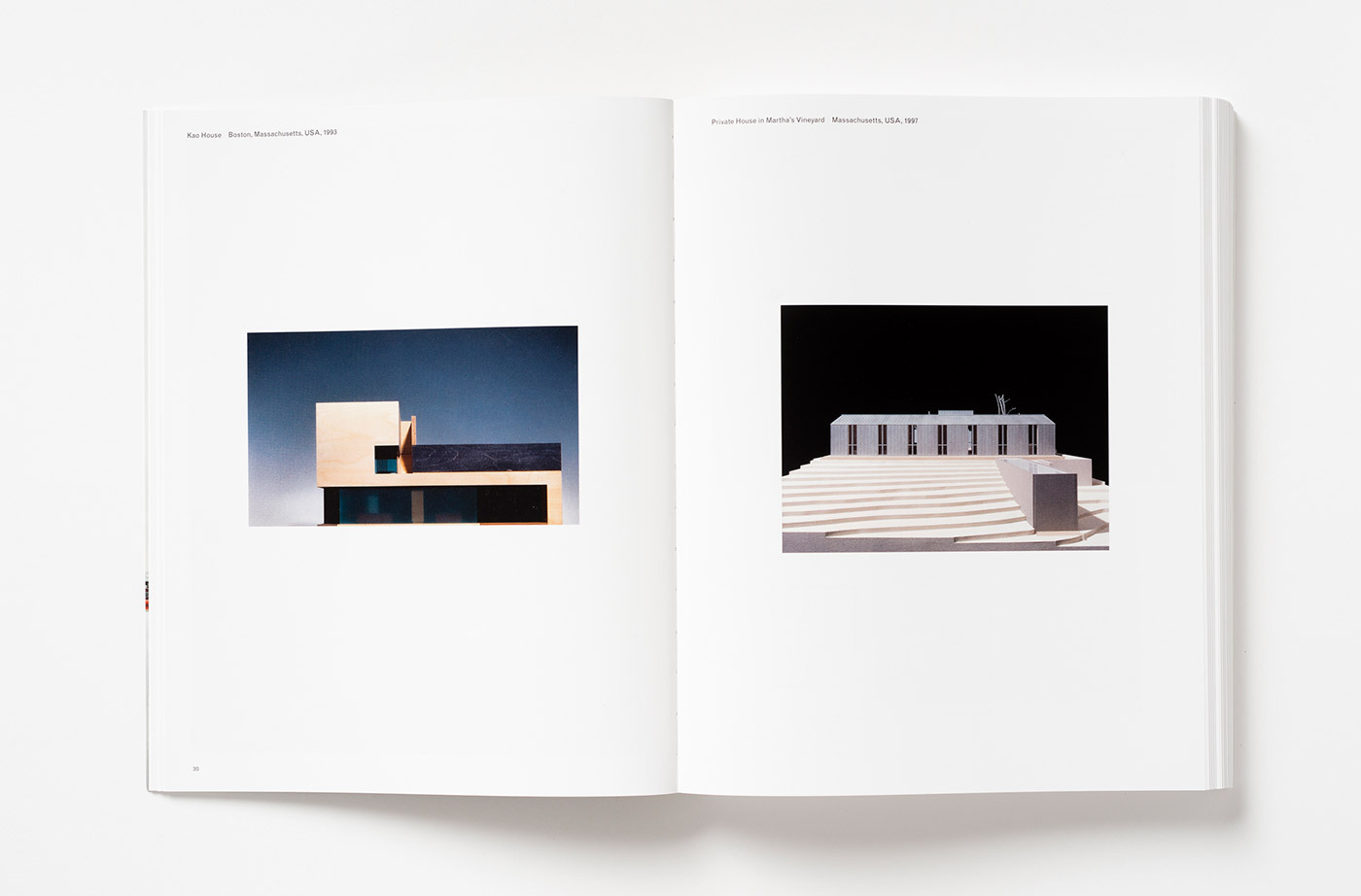‚ÄėDavid Chipperfield. Idea e realt√†‚Äô at Palazzo della Ragione of Padua
Padua, Italy
2005
Thirty five projects, representing more than twenty years of the practice were displayed in the Grand Hall of the Palazzo della Ragione of Padua, a venue with one of the greatest Medieval frescoed interiors in Europe.
The exhibition was organised by the Ordine degli Architetti, Pianificatori and Paesaggisti of the Province of Padua and the Comune and Provincia of Padua, and designed by David Chipperfield Architects. It displayed three categories of projects: built work, projects under construction and those in design development through painting-like drawings and sculpture-like models with special attention paid to form and space.
The works on display demonstrated the diversity of the practice's work, varying from small-scale residential projects to large-scale masterplans in Europe, the United States and the Far East, including the recently completed projects, the Figge Art Museum in Davenport, USA, and the Villaverde housing project in Madrid, Spain.
Images by Richard Davies. 
Extract from the exhibition catalogue:
In a cultural panorama dominated by the rhetoric of the media, David Chipperfield (London 1953) represents a front of resistance against the flood of the virtual, calling the architect to take up his sense of social responsibility once again and bringing architecture back to a new foundation of the concept of limits. ‚ÄúArchitecture ‚Äď he says ‚Äď has severe limits. The limits of architecture are its strengths. The inevitable tendency to stabilize is the latent power of architecture‚ÄĚ.
Exponent of a liberal tradition of architecture as humanistic practice at the service of the collective, Chipperfield is idiosyncratically distant from the communicative exasperation that equates architecture with simple information: the authority of his work stands in its being a representation of a balance between idea and reality, between the abstract and physicality, between an intellectual approach and sensorial enhancement that acknowledges the centrality of the notion of ‚Äúordinary‚ÄĚ in its twofold meaning as element of order and element of everyday life.
Challenging the frenetic demand for the spectacular that attributes to architecture the charisma of a miraculous resolution of the laborious process of negotiation between the individual and society, he reminds us of our duty to dialectical negotiation, shifting the accent from emphasis on the exceptional to responsibility towards the everyday.
Fulvio Irace
